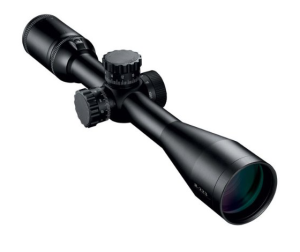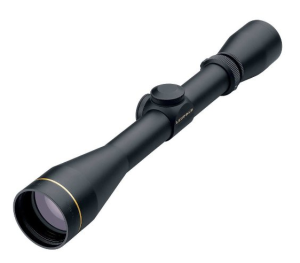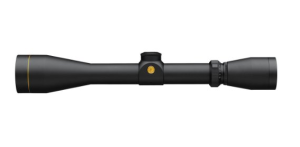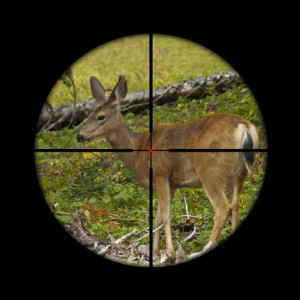The Bushnell AR Optics Drop Zone-223 Riflescope is the top choice of the Bushnell brand. It is a critically acclaimed scope and has been ever since it was first released online. Many customers recommend getting this Riflescope thanks to its high accuracy magnification range, high grade materials used on the exterior, as well as its reliable features and functions. The Bushnell Drop Zone-223 scope will easily overwhelm you with its exciting features, giving you the edge you need for the ultimate sport experience.
Some great features available on the Drop Zone-223 Riflescope include advanced technology. One example of this would be the new side parallax features on the sides of the scope to help target turrets for you. The controls listed on the side are to concisely adjust the magnification. The scope is calibrated for 223 REM/5.556, 55-62 grain loads.
In addition, the optic lens is coated in several materials to enhance clarity of vision even when you are swapping between degrees of magnification. The eyepiece has great focus that will further improve your rifle positioning focus and adjustments.
It’s also quite a durable scope as it’s waterproof and able to stay protected in environments that may otherwise hinder the performance of or damage the scope itself.
Using this product grants you access to several benefits. For one, it improves visual range; the Bushnell scope improves the clarity of your view with a multi-coated optic lens and a range that allows you to get your target at the best angle. You’re also guaranteed to get high-quality performance that other models lack.
The scope is similar to another Bushnell product, the FFP scope, and it shares its long-lasting durability.
The Bushnell AR Optics Drop Zone-223 Riflescope has a very detailed structure throughout the whole of the body. The body itself, the controls and the diameter of the lens have all been calculated carefully to ensure you have the features that old rifle models didn’t while giving you the best possible functions available on the market today.
The control panels are easy to ready and don’t cause delay while you are actually using the rifle. It is easy to quickly shift control when necessary.
Finally, this is one of the more affordable top-shelf scopes out there; you don’t need to settle with an old rifle scope just because other ones seem to be very expensive. It’s easy for anybody to afford the low cost of the Drop Zone-223 Riflescope.
There are one or two cons to the riflescope, unfortunate. For example, those who have serious vision problems may not have success using the product. Of course, it doesn’t negatively impact your eyesight, but if you have difficulties with vision, the product may not be of use to you.
Additionally, although the riflescope uses a similar kind of size that most rifles will use, there is no guarantee that you are going to be able to use it with a rifle that you currently have. As nice and useful as the scope may be, it is not necessarily the most economical choice to get a new rifle just for the sake of using a new scope.

 A scope with the most powerful lens in the world is no good if you can’t see through it properly. I love the M-223 with its four inches of non-critical eye relief, which gives me an amazingly clear sight without risking recoil damage to my face. The ocular lens on the M-223 is huge, which gives me a super bright high-resolution view. I also like the four-time zoom range, which helps me quickly identify targets in the field.
A scope with the most powerful lens in the world is no good if you can’t see through it properly. I love the M-223 with its four inches of non-critical eye relief, which gives me an amazingly clear sight without risking recoil damage to my face. The ocular lens on the M-223 is huge, which gives me a super bright high-resolution view. I also like the four-time zoom range, which helps me quickly identify targets in the field. The old rule of thumb suggesting that one should invest as much in his optic as his rifle has been known to bewilder many a shooter. Not the least of these are the wise folks who have laid down a moderate amount of cash and walked away with a scope as impressive as the
The old rule of thumb suggesting that one should invest as much in his optic as his rifle has been known to bewilder many a shooter. Not the least of these are the wise folks who have laid down a moderate amount of cash and walked away with a scope as impressive as the  The
The  The right scope can make or break a hunt. No one wants to be caught out in the field with shoddy equipment that causes a missed shot. Thankfully, quality scopes are available from top manufacturers across a spectrum of prices. This guide will introduce you to a few and give you the information you need to select the
The right scope can make or break a hunt. No one wants to be caught out in the field with shoddy equipment that causes a missed shot. Thankfully, quality scopes are available from top manufacturers across a spectrum of prices. This guide will introduce you to a few and give you the information you need to select the